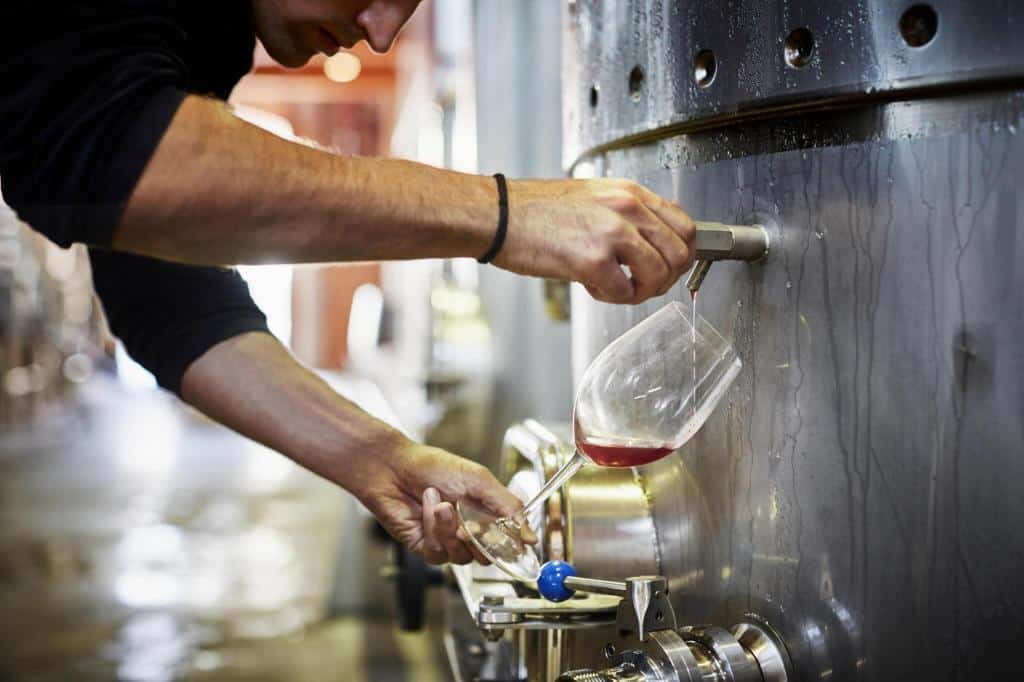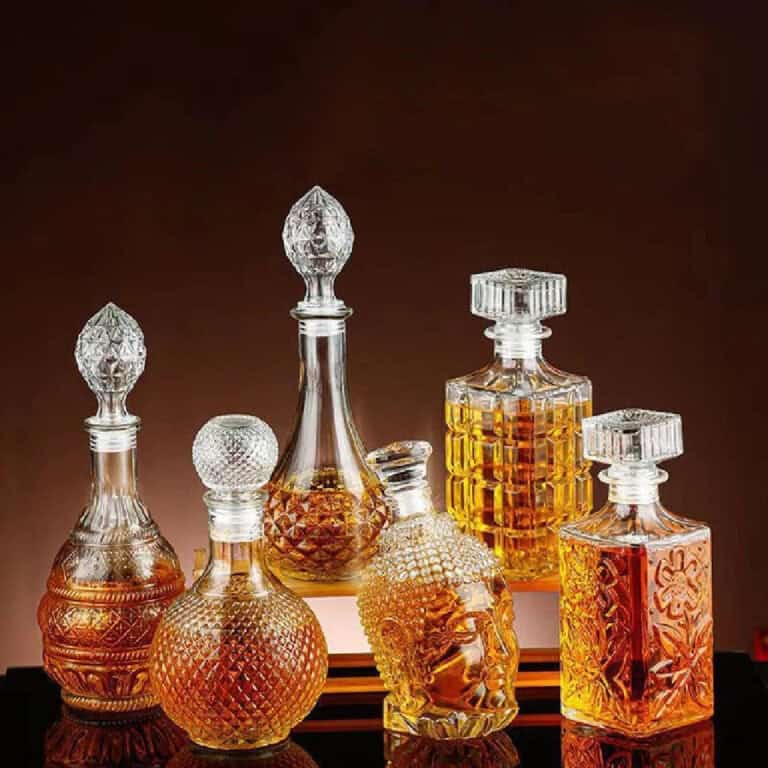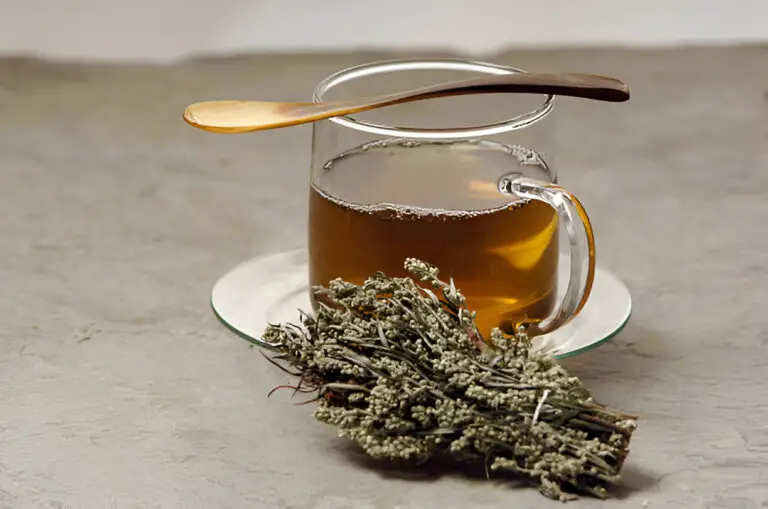A Guide to Reducing Acidity in Wine: Post-Fermentation Techniques

The delicate balance of acidity in wine is a fundamental element that can make or break its overall quality. Too much acidity can leave the wine tasting sharp and unpleasant, while too little can lead to a flat and lackluster flavor profile. Any seasoned winemaker will tell you that achieving the right level of acidity is crucial. It creates a well-rounded and enjoyable drinking experience.
In this article, we delve into the art of reducing acidity in wines after fermentation—a process that calls for both precision and expertise. We explore traditional methods that have stood the test of time. We also explore cutting-edge techniques that embrace technological advancements.
Whether you are an experienced vintner seeking new approaches or a budding home winemaker looking to elevate your craft, this guide promises fresh insights on how to effectively reduce acidity levels in your beloved creations.
This comprehensive guide aims to educate and inspire passionate wine lovers. It is for those who seek mastery in their craft by refining one of its key pillars: balancing the delicate dance between acids and flavors.
Understanding Winemaking Acidity

To truly appreciate the significance of reducing acidity in wine, we need to grasp the key concepts that define this characteristic. One of the primary measurements used in winemaking is pH, which indicates the level of acidity or alkalinity present in a wine. A low pH suggests higher acidity levels, while a high pH signifies lower acidity. This measurement plays a crucial role in determining the stability and aging potential of wines.
Another critical parameter for understanding acidity is titratable acidity (TA). TA refers to the total concentration of acids present in wine and provides an indication of its perceived sourness or tartness. It is measured by titrating with alkali until neutralization occurs. Tartaric acid, malic acid, citric acid, and citric acids are the most common acids in grapes and wines. Sometimes lactic acid is also present.
The balance between these different types of acids greatly impacts both taste perception and overall quality. For example, excessive levels can result in unpleasant sharpness or sourness. This can overpower other flavor nuances within the wine. Conversely, insufficient amounts may lead to flat or dull character profiles lacking vibrancy. Maintaining an optimal balance throughout fermentation is vita. However, it does not always guarantee desired results post-fermentation.
Why Does Some Wine Become Too Acidic?
Wine acidity is a crucial element influencing its taste. However, if a wine is too acidic, it will taste tart and sharp. There are several reasons why some wines become too acidic.
Factors Influencing Acidity:
- Grape Variety: Some grape varieties inherently possess higher acidity levels, contributing to the overall profile of the wine.
- Climate and Terroir: The environmental conditions where grapes grow influence their acid content. Cooler climates often result in grapes with higher acidity.
- Harvest Timing: Picking grapes at the right moment is crucial. Harvesting too early or late can lead to imbalanced acidity.
- Winemaking Practices: The fermentation process and malolactic fermentation can affect acidity. Improper handling during winemaking may exacerbate acidity issues.
Testing Acidity Levels: A Crucial Step in the Winemaking Process
Measuring and understanding acidity levels is crucial when it comes to managing and adjusting the acidity of wine. Like mentioned earlier, two commonly used methods for quantifying acidity are measuring pH (potential hydrogen) and TA (total acidity). pH indicates the strength of acid in a solution, while TA measures the concentration of acids present. Both of these measurements provide winemakers with valuable information about their wine’s overall acidity.
To accurately measure pH, invest in a quality pH meter or portable pH tester that provides precise readings. Calibration of the instrument before each use is essential to ensuring accurate results.
When testing for TA, many winemakers prefer using titration kits or instruments equipped with an automatic titrator. These kits typically come with detailed instructions on how to conduct the test accurately and determine acidity levels.
It is important to note that both pH and TA need to be measured together as they complement each other’s information regarding wine acidity. Knowing pH helps analyze taste perception. Determining TA guides adjustments necessary for achieving the desired balance and flavor profiles.
| Also see: What Does the Aperitif Ouzo Smell Like? |
Pre-Fermentation Techniques: Managing Acidity during Grape Selection
Grape selection is one of the most crucial factors in managing acidity levels in wine. It occurs before the fermentation process begins. This stage offers winemakers an opportunity to make decisions that will ultimately impact the final acidity profile of their wines. By carefully choosing the right grapes, winemakers can lay a solid foundation for achieving the desired acidity levels.
When choosing grapes, it is important to know that different types of grapes naturally have different amounts of acidity. For instance, cool-climate varieties such as Riesling and Sauvignon Blanc generally have higher natural acidities compared to warm-climate varieties like Chardonnay or Merlot. By selecting grapes based on their inherent characteristics, winemakers can proactively manage acidity levels.
Another factor to consider during grape selection is ripeness. Grapes harvested at different stages of ripeness will exhibit distinct acid profiles. Generally, less ripe grapes tend to have higher acids, while fully ripe ones may showcase lower acids due to degradation over time.
Depending on the desired outcome, winemakers can choose grapes at various degrees of ripeness strategically, thereby influencing post-fermentation acidity management.
Grape varieties and ripeness levels vary. Winemakers often add acid to adjust acidity before fermentation. These additives, such as tartaric or malic acid, are carefully measured and added directly into the must with precise control over dosage quantities.
When and how these changes are made is often determined by the style of winemaking. For example, some like to make changes to the acids after the grapes are crushed but before fermentation, while others like to add them closer to when the yeast strains are added. The timing depends on considerations like varietal expression preservation and integration within other flavor components present in specific wine styles.
While pre-fermentation techniques offer opportunities for optimizing initial conditions regarding wine’s acidic structure, they cannot fully eliminate acid adjustments post-fermentation. As a result, a combination of pre- and post-fermentation methods is often recommended to achieve the desired acidity levels in finished wines.
Post-Fermentation Acid Reduction Techniques: Traditional Approaches
1. Cold Stabilization
Description: Cold stabilization involves chilling the wine to encourage the precipitation of tartrate crystals. Tartrate crystals are a natural component that contribute to acidity.
How-to:
- After fermentation, transfer the wine to a cold environment (around 28–32 °F or -2 to 0°C).
- Allow the wine to rest for several weeks, facilitating the settling of tartrates.
- Carefully rack or filter the wine, leaving the titrates behind.
2. Malolactic Fermentation
Description: Malolactic fermentation is a bacterial process. It converts harsh malic acid into milder lactic acid and reduces overall acidity.
How-to:
- Inoculate the wine with malolactic bacteria after primary fermentation.
- Maintain a moderate temperature (around 20–25 °C or 68–77 °F) for the bacteria to thrive.
- Monitor acidity levels and stop the process when the desired balance is achieved.
Malolactic fermentation not only reduces perceived acidity, but also enhances wine complexity and stability. This secondary fermentation process softens the overall palate profile by imparting a creamy texture and introducing desirable flavor compounds such as buttery notes and hints of vanilla. It is particularly effective in high-acid grape varieties like Chardonnay, where excessive tartness can be tamed through MLF.
However, it’s important for winemakers to carefully control MLF to avoid over-reduction or spoilage. The process requires monitoring pH levels and temperature and ensuring proper nutrient availability for the bacteria involved.
3. Blending Techniques
Description: Blending involves mixing wines with different acid profiles to achieve the desired balance.
How-to:
- Create multiple wine batches with varying acidity levels.
- Experiment with different blend ratios to find the optimal combination.
- Test and adjust until the desired acidity is achieved.
4. Calcium Carbonate Addition
Description: Calcium carbonate reacts with excess acidity, forming insoluble tartrate compounds that precipitate out of the wine.
How-to:
- Measure the acidity level of the wine using a pH meter.
- Gradually add calcium carbonate while monitoring pH until the desired level is reached.
- Allow the wine to settle before bottling.
Post-Fermentation Techniques: Modern Approaches
In recent years, technology has revolutionized post-fermentation techniques for reducing acidity in wine. The wine industry has witnessed significant advancements. Two prominent methods to mention are reverse osmosis and electrodialysis. They offer winemakers precise control over the acid levels. This helps preserve other desirable characteristics of the wine.
Reverse osmosis is a technique that uses semi-permeable membranes to selectively remove water and certain molecules from wine. By applying pressure, it forces the solvent (water) through these specialized filters, leaving behind a concentrated solution with reduced acidity.
The advantage of this method is its ability to target specific acids without compromising flavor or aroma compounds. However, it’s crucial for winemakers to exercise caution. Excessive use may dilute flavors and strip away some volatile components.
Electrodialysis takes a different approach by utilizing an electrical current applied across ion-selective membranes, separating compartments containing different charged ions. The electric field drives positive ions towards one side and negative ions towards another, resulting in an adjusted pH in the desired direction. This technique allows winemakers to reduce overall acidity without altering other important characteristics such as color or aroma profiles. Despite its effectiveness, electrodialysis requires specialized equipment and technical expertise for optimal results.
While modern approaches like reverse osmosis and electrodialysis offer great precision in adjusting acidity levels, they also come with their limitations—financial investment being one of them. These techniques typically require expensive equipment and expert knowledge for proper implementation.
Additionally, although they can effectively reduce total acidity, they may not always address individual acid imbalances found within a specific wine blend. Therefore, it’s essential for winemakers to carefully consider cost factors alongside their desired outcomes when considering these advanced post-fermentation techniques.
| Related: Can You Mix Brown and White Liquor? A Look at How Well They Go Together |
Wine Blending: An Artful Approach to Addressing High Acidity Levels
Blending, an age-old technique in winemaking, offers a creative solution for reducing acidity levels in finished wines. By blending different grape varieties or batches of wine with varying acid profiles, winemakers have the opportunity to achieve a balanced and harmonious final product. When using blending as a method to reduce acidity, several considerations come into play.
First, winemakers must determine the desired acidity level before blending. This involves carefully evaluating the existing acids present in each component. Then, calculate their potential impact on overall acidity. Winemakers must also consider how various acids interact with other sensory aspects of the wine, such as flavor and aroma profiles.
Furthermore, selecting appropriate grape varieties or specific lots that complement one another is essential when utilizing blending techniques to reduce acidity. Some varieties naturally possess lower acidity levels than others—such as Mourvèdre or Syrah—while certain vineyard sites may yield grapes with softer acidities due to climatic conditions or soil types.
Winemakers strategically combine these components during the blending process. This helps them mitigate excess tartness and enhance other desirable characteristics.
In addition to grape selection considerations, careful attention should be paid to factors like fermentation vessels (such as barrels versus stainless steel tanks) and aging methods (such as oak barrel maturation) when applying blending techniques for acidity reduction purposes.
These variables can significantly influence both acid perception and integration within the final blend. Taking into account nuances like these contributes further depth and complexity to dynamically balancing not only high-acidity issues but also overall taste experiences in your wines.
Barrel Aging: Unveiling the Magic of Time
Experienced winemakers have long hailed barrel aging as a time-honored technique for mellowing acidity in wines. The process involves placing wine in barrels and allowing it to interact with the wood over an extended period of time. This interaction not only imparts unique flavors and aromas but also aids in reducing acidity levels.
When opting for barrel aging to minimize acidity, selecting the right type of oak is crucial. Oak barrels contribute tannins through their pores. This can soften and balance the wine’s flavor while reducing sharpness. French oak barrels are particularly popular due to their delicate flavors that harmonize well with various grape varietals.
The duration of barrel aging plays a pivotal role in achieving the desired results. It is important to strike a fine balance between imparting enough oak influence without overpowering the natural characteristics of the wine.
Generally, white wines benefit from shorter periods (around six months) as they are more sensitive to oak extraction, whereas red wines may require longer durations (up to 24 months) to achieve the desired acidity reduction and optimal flavor development.
Winemakers can soften acid profiles and enhance enjoyment by skillfully using barrel aging techniques. They can harness time’s transformative powers to add complexity and depth.
Experimentation and Balance: Finding Your Perfect Wine
This article explores various post-fermentation techniques. The techniques can be used to reduce the acidity of wine. Each method, from blending to malolactic fermentation, offers its own unique way of achieving a harmonious balance in your wines. However, it is important to remember that there is no one-size-fits-all approach when it comes to winemaking. Each grape variety and vintage presents its own set of challenges and characteristics.
The key to a successful reduction in acidity lies in experimentation and finding the right combination of methods for your specific wine. Embrace the freedom that comes with being a winemaker; don’t be afraid to think outside the box and push traditional boundaries. While respecting time-honored practices is crucial, there is always room for innovation and improvement.
So go ahead and seize the opportunity to create something truly remarkable. Combine old traditions with new advancements in winemaking technology. Allow yourself the luxury of trial and error, as this process not only enhances your skills but also adds an exciting element of discovery to your craft.
Remember, above all else, to strive for balance in every glass you produce. Magic happens when acidity harmonizes with sweetness. The body complements the aroma. All elements come together flawlessly on the palate. With patience, dedication, and a willingness to explore different paths, you can achieve balance. This can be through traditional techniques or modern innovations. We are confident you will discover your perfect wine.






